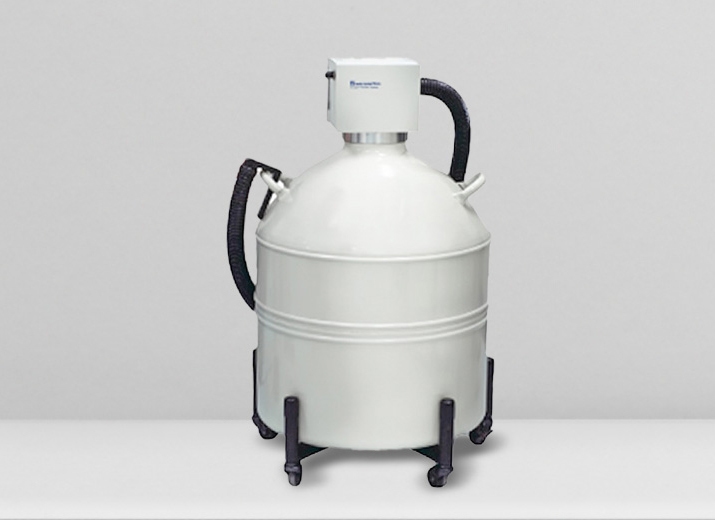
LN2 Transfer System
Specifically developed for conveniently filling Dewars for gas adsorption instruments, but also can be used for other cryogen applications.
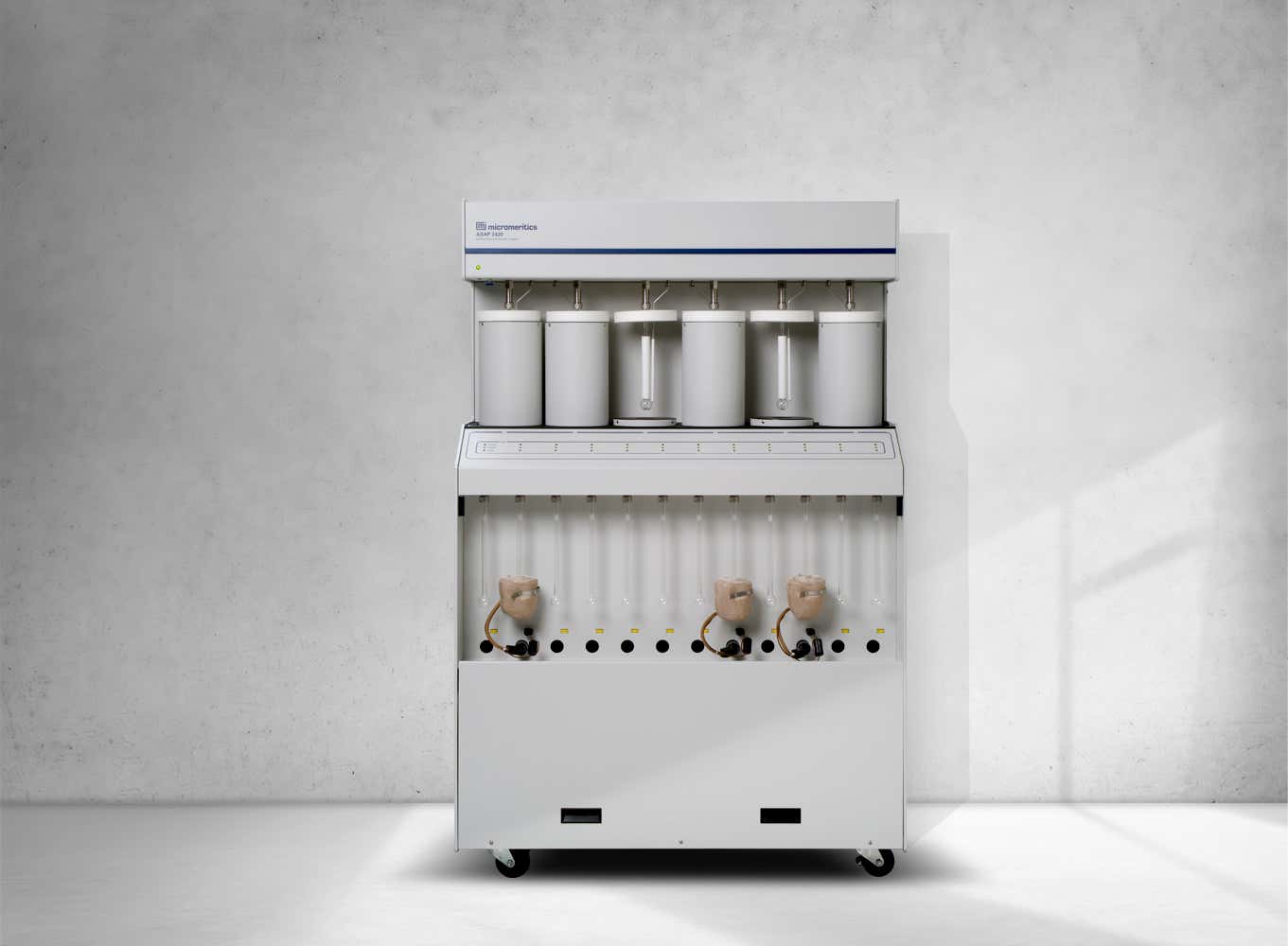

Looking for more information?
To request a quote, more information or download a brochure select an option below.
A powerful combination: Micromeritics is a Malvern Panalytical company

High performance and high sample throughput
The Micromeritics ASAP 2425 is a fully automated system engineered to deliver precise surface area and porosity measurements while supporting high sample throughput. Its integrated design combines advanced performance with flexible analysis and sample preparation in a single unit — ideal for laboratories seeking to scale operations efficiently.
Surface area and porosity are critical parameters that directly affect the behavior and quality of many products and materials. Reliable measurement and control of these characteristics is essential. These same properties are also key in evaluating the structure, formation, and usage potential of natural materials.
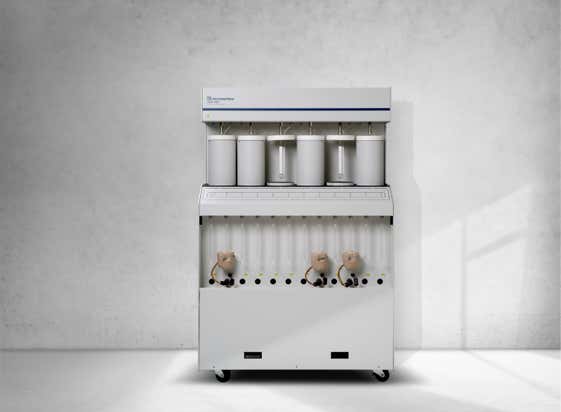
The automated Micromeritics ASAP 2425 surface area and porosimetry system is designed to help busy laboratories expand their workflow while providing highly accurate and precise surface area and porosimetry data. High performance, versatile analysis, and sample preparation systems are included in the same instrument.
Six independent analysis stations
Sample tube with Isothermal Jacket
Long-life Dewars
Po tube with Isothermal Jacket provides continuous Po reading
Twelve degassing stations
Independently controlled heating mantles
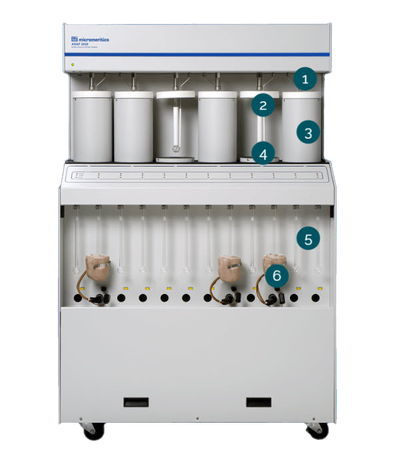
Surface area and porosity are critical factors in pharmaceutical manufacturing, influencing product purification, blending, tableting, packaging, and ultimately impacting shelf life, dissolution rates, and bioavailability.
In ceramics, these properties affect how greenware cures and bonds, shaping the final product’s strength, texture, and density. For glazes and frits, surface area plays a role in preventing shrinkage, crazing, and crawling.
Industrial adsorbents rely on precise knowledge of surface area, pore volume, and pore size distribution for quality control and for fine-tuning separation processes, with porosity affecting selectivity.
Tight control over porosity and surface area is essential in systems like automotive vapor recovery, paint solvent reclamation, and wastewater pollution mitigation.
The durability, grip, and overall performance of tires are closely tied to the surface area of the carbon black materials they contain.
Catalytic efficiency depends on active surface area and defined pore structure — restricting pore size helps selectively target desired molecular reactions.
In coatings and printing, pigment or filler surface area influences appearance, gloss, and adhesion, while media porosity affects ink absorption and blistering.
Propellant burn rate is governed by surface area — too high can be hazardous; too low may cause poor ignition or erratic performance.
Artificial bone integration relies on engineered porosity that mimics natural bone and supports tissue growth.
Supercapacitors benefit from materials with high surface area and tailored porosity, which improve charge storage while conserving expensive raw inputs.
In cosmetics, surface area often serves as a particle size proxy when powder agglomeration complicates direct sizing.
Heat shields and insulators depend on optimized surface area and porosity to balance weight and functionality.
In geosciences, porosity impacts groundwater flow and petroleum extraction by determining fluid capacity and recovery effort.
Hydrogen storage in nanotubes is estimated using their surface area and microporous structure.
Fuel cell electrodes require high-surface-area materials with controlled pore networks to reach peak power density.
| Voltage | 100/115/230 VAC (± 10%) |
|---|---|
| Frequency | 50 or 60 Hz |
| Power | 800 VA, exclusive of vacuum pumps, which are powered separately |
| Temperature | 10 to 30 °C operating,
-10 to 55 °C storage or shipping |
|---|---|
| Humidity | Up to 90% relative (non-condensing) for instrument |
| Analysis | 6 sample ports, each with a constantly monitored saturation pressure port |
|---|---|
| Degas | 12 degas ports, each with independently controlled heating mantle |
| Manifold temperature transducer | Type: Platinum resistance device (RTD) Accuracy: ±0.10 °C by keyboard entry Stability: ±0.10 °C per month |
|---|---|
| Manifold pressure transducer | Range: Vacuum to 950 mmHg
Operating: 1000 mmHg maximum 10 mmHg added for krypton option, 1 mmHg for micropore option
Resolution:
1000 mmHg Transducer: 0.01 mmHg
10 mmHg Transducer: 0.0001 mm
1 mmHg Transducer: 0.00001 mmAccuracy:
1000 mmHg Transducer: within 0.1% FS
10 mmHg Transducer1: within 0.15% of reading
1 mmHg Transducer2: within within 0.12% of reading
|
| Sample and Po port transducers | Range: 0 to 950 mmHg
Resolution: 0.01 mmHg Accuracy: ±0.1% Full Scale |
| Vacuum control | Type: Thermocouple
Range: 0.001 to 1 mmHg |
| Dimensions (W, D, H) | 103 x 51 x 159 cm |
|---|---|
| Weight | 160 kg |
| Nitrogen unit | 2 oil-based pumps: 1 analysis, 1 degas
4 pumps (optional): 2 oil-free (1 analysis, 1 degas), 2 high vacuum (1 analysis, 1 degas) |
|---|---|
| Krypton Unit | Oil-based mechanical pump: 5 x 10-3 mmHg ultimate vacuum
Oil-free and high vacuum pump: 3.8 x 10-9 mmHg ultimate vacuum |
| Capacity | 12 degas ports |
|---|---|
| Vacuum control | Selectable target pressure controls switchover from restricted to unrestricted evacuation |
| Evacuation rate | Selectable evacuation rate from 1.0 to 50.0 mmHg/s |
| Manifold pressure transducer | Range: 0 to 950 mmHg
Resolution: 0.01 mmHg
Accuracy: ±0.1% Full Scale
|
| Vacuum transducer | Type: Thermocouple
Range: 0.001 to 1 mmHg |
| Titled backfill gas | User-selectable at dedicated port, typically nitrogen or helium |
| Temperature control range | Temperature Range: Ambient to 450 °C (Programmable)
Temperature Control: 1 ramp during evacuation phase, 5 additional selectable ramps during heating phase
Selection: Digitally set, 1 °C increments from computer
Accuracy: Deviation less than ±10 °C of set point at the sensing thermocouple embedded in the heating mantle
|

Specifically developed for conveniently filling Dewars for gas adsorption instruments, but also can be used for other cryogen applications.
The ASAP 2425 system includes twelve automatically controlled sample preparation ports that operate independently. Samples may be added or removed from degas ports without disturbing the treatment of other samples undergoing preparation.
The sample preparation system is fully automated with controlled heating time profiles. Temperature and ramp rate can be set and monitored individually and controlled from a few degrees above ambient to 450 °C. The temperature hold period may extend past the point when evacuation is completed.
A programmable pressure threshold can suspend the temperature ramp if the outgassing pressure exceeds the limit specified, preventing destructive steaming or other undesired reactions with residual gasses and vapors.
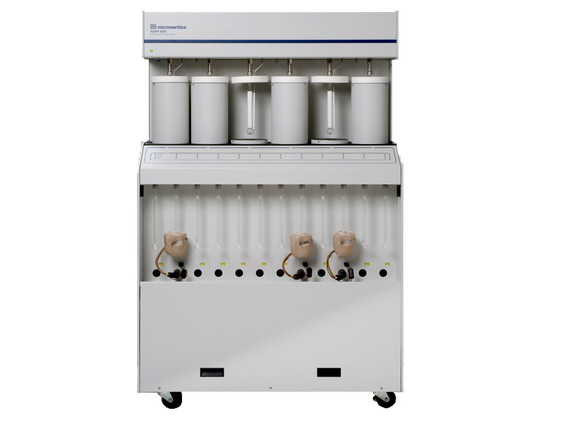
The ASAP 2425 is also available in configurations tailored for specific applications, including low surface area krypton analysis and micropore measurements.
The krypton model features a 10 mmHg pressure transducer, making it ideal for accurately quantifying very low surface area materials, even those under 1 m²/g.
The micropore option incorporates a 1 mmHg transducer, which enhances low-pressure sensitivity and significantly improves the accuracy of microporous structure analysis by offering greater pressure resolution in the relevant range.
Innovative MicroActive Software
Micromeritics’ MicroActive software delivers an intuitive platform for hands-on evaluation of isotherm data.
Users can seamlessly adjust the data range by including or excluding specific points using movable, on-screen calculation bars.
The software also supports both linear and logarithmic views for flexible visualization of isotherms.
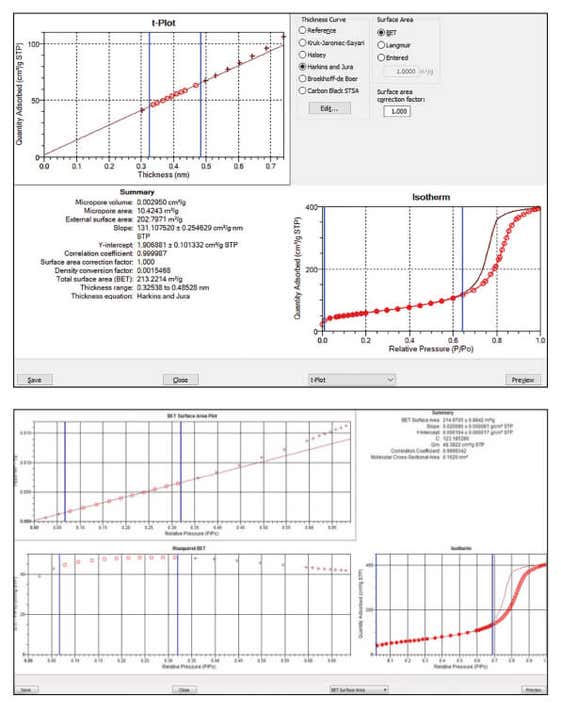
Interactive Reports for the ASAP 2425 include the following (where relevant to performed analysis):
Please contact support for the latest user manuals.
Please contact support for the latest software version.
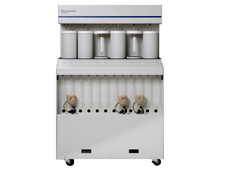
Combining porosimetry and surface area analysis, the ASAP 2425 is the ideal match for high capacity requirements.